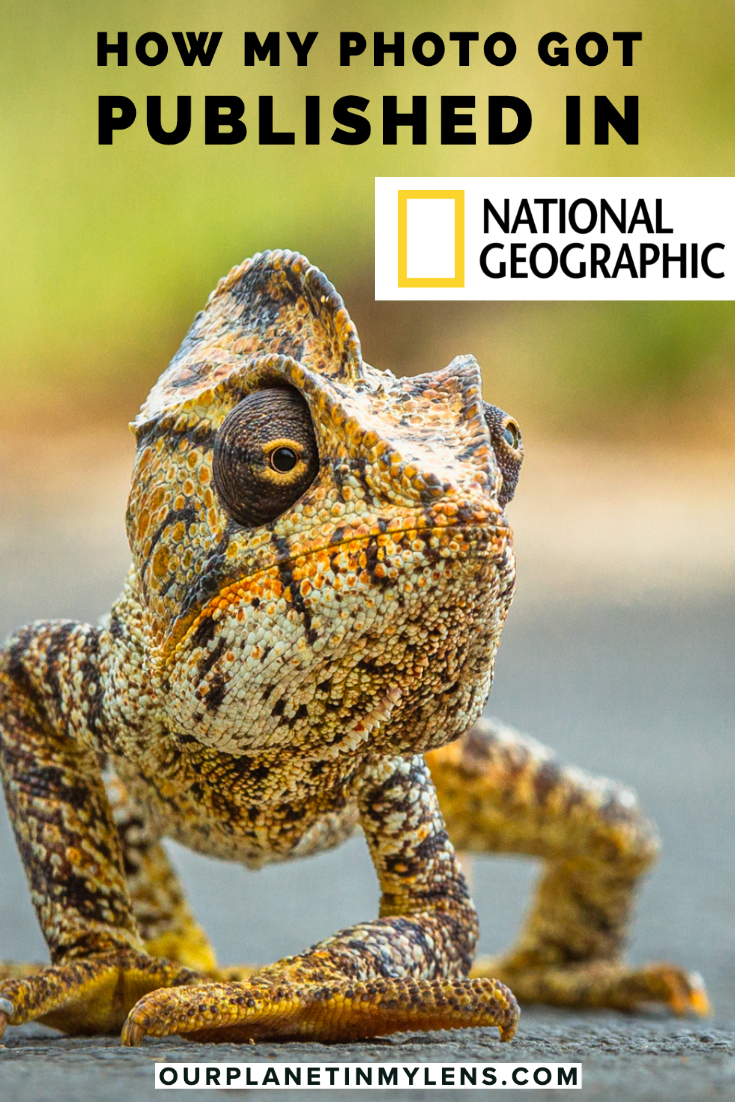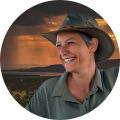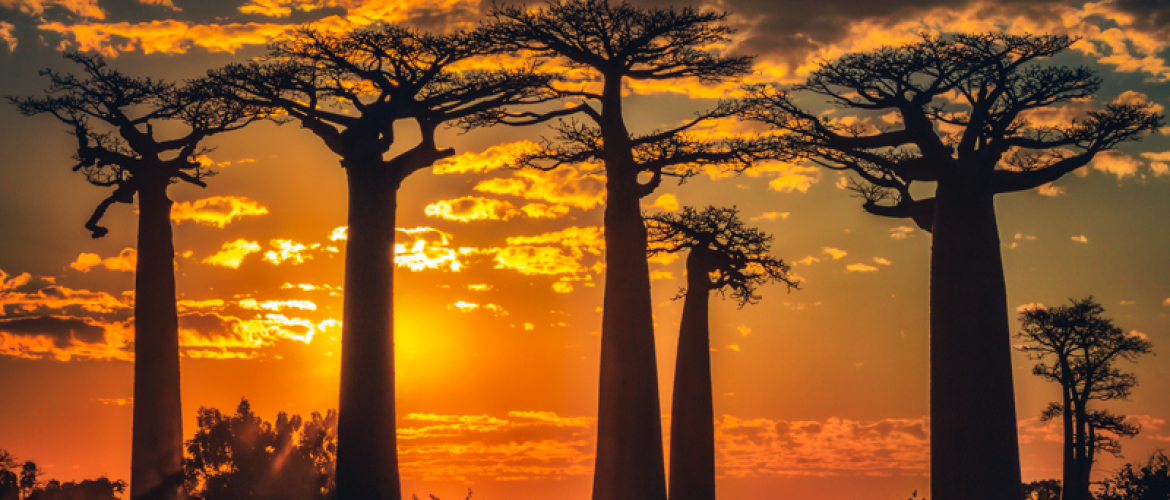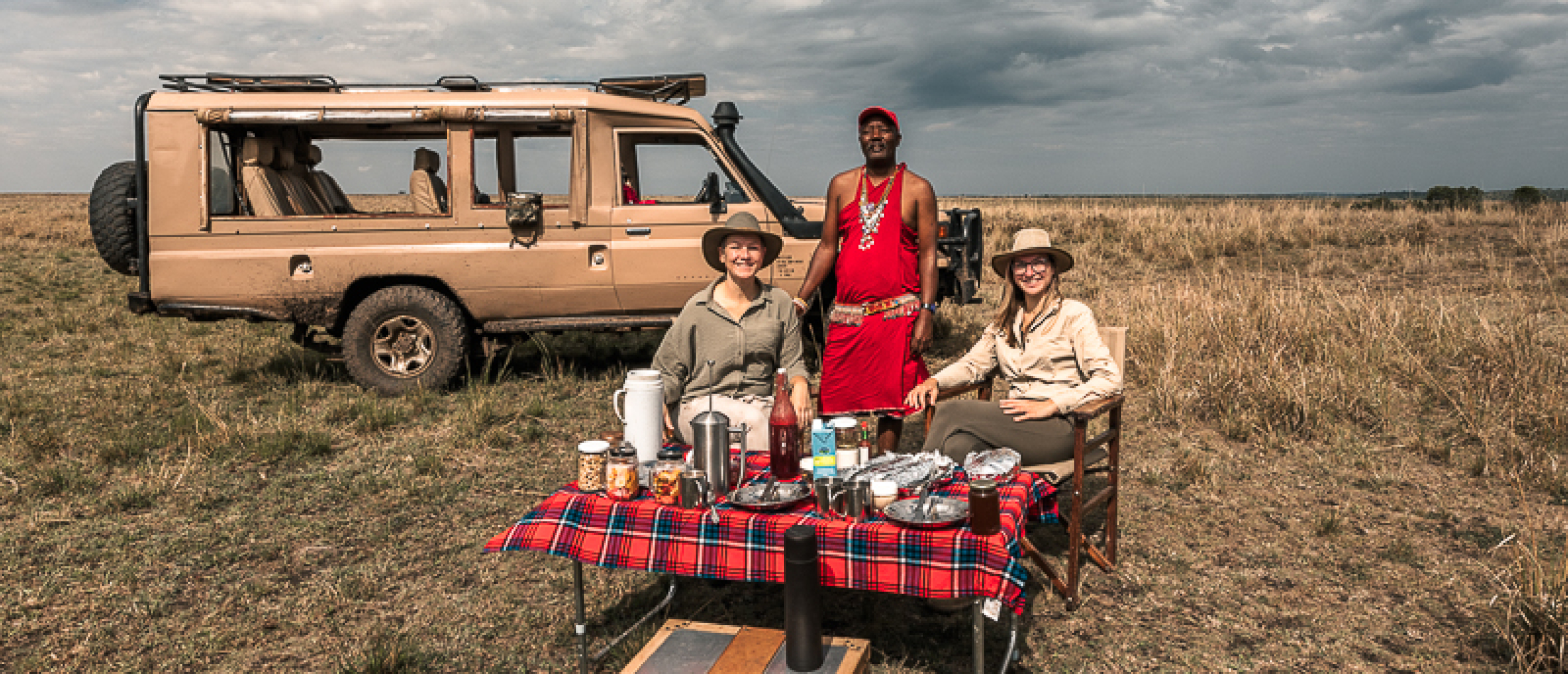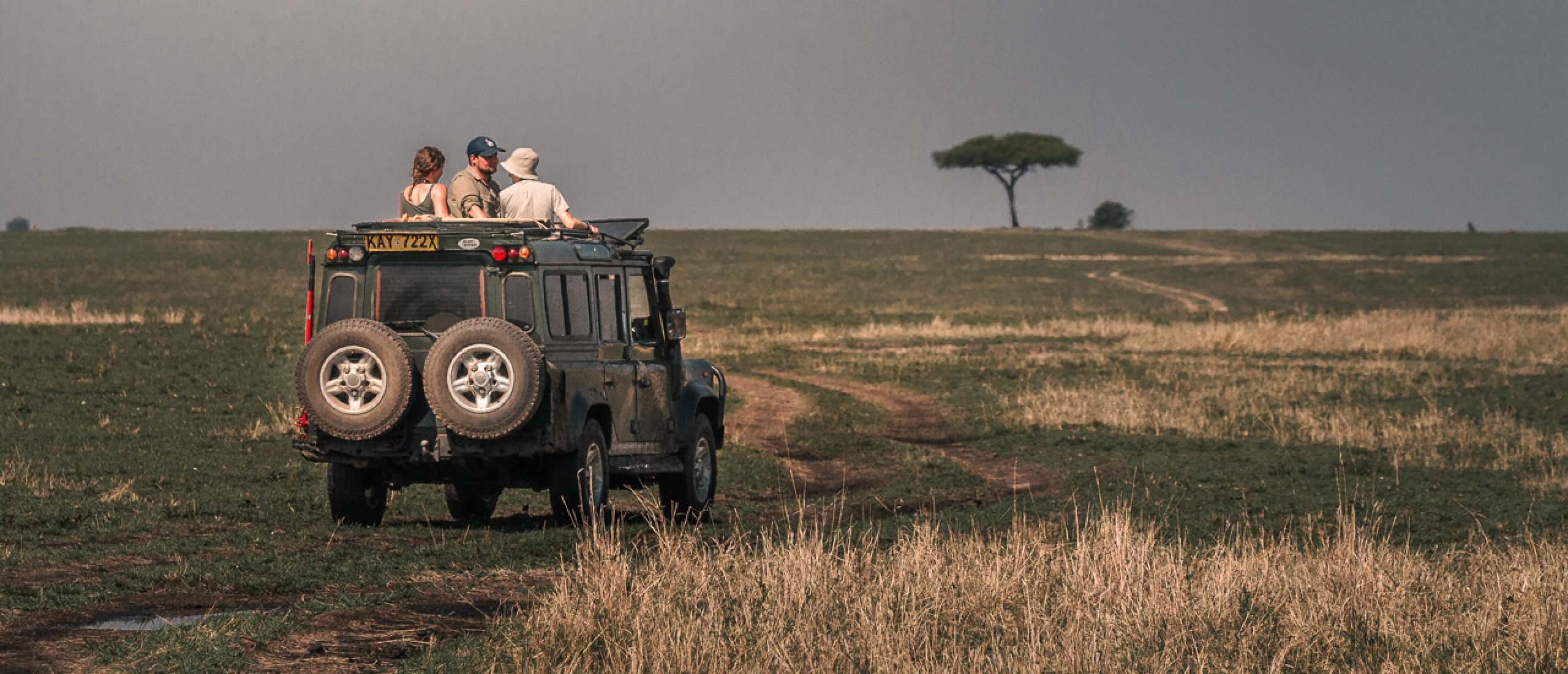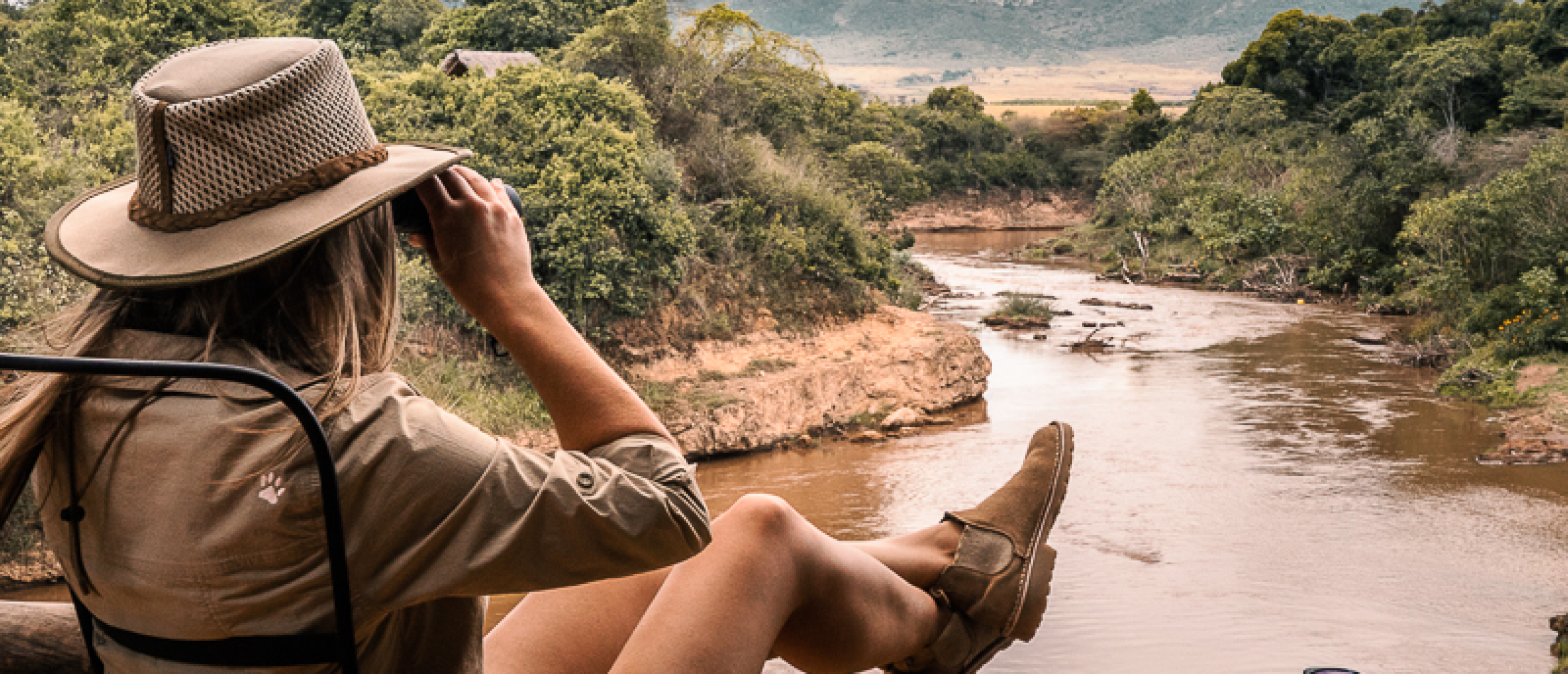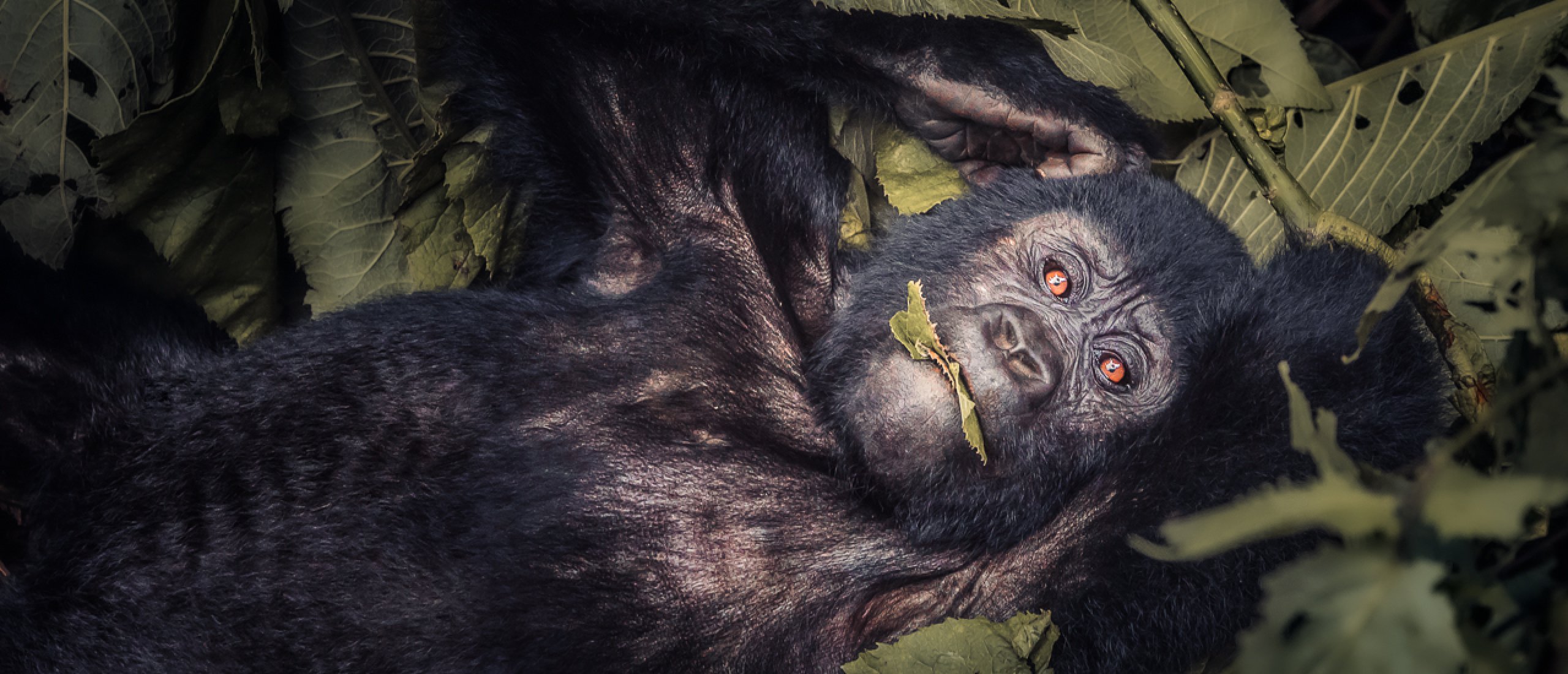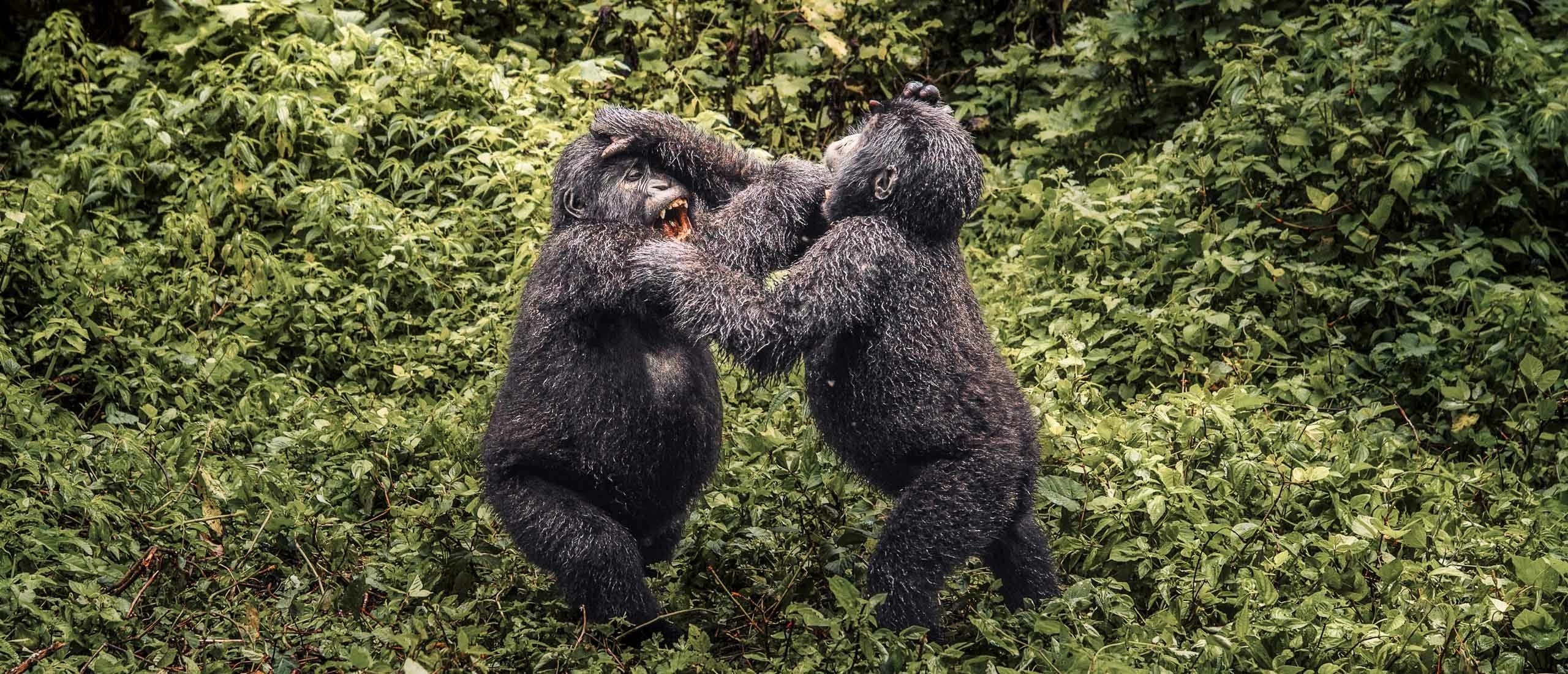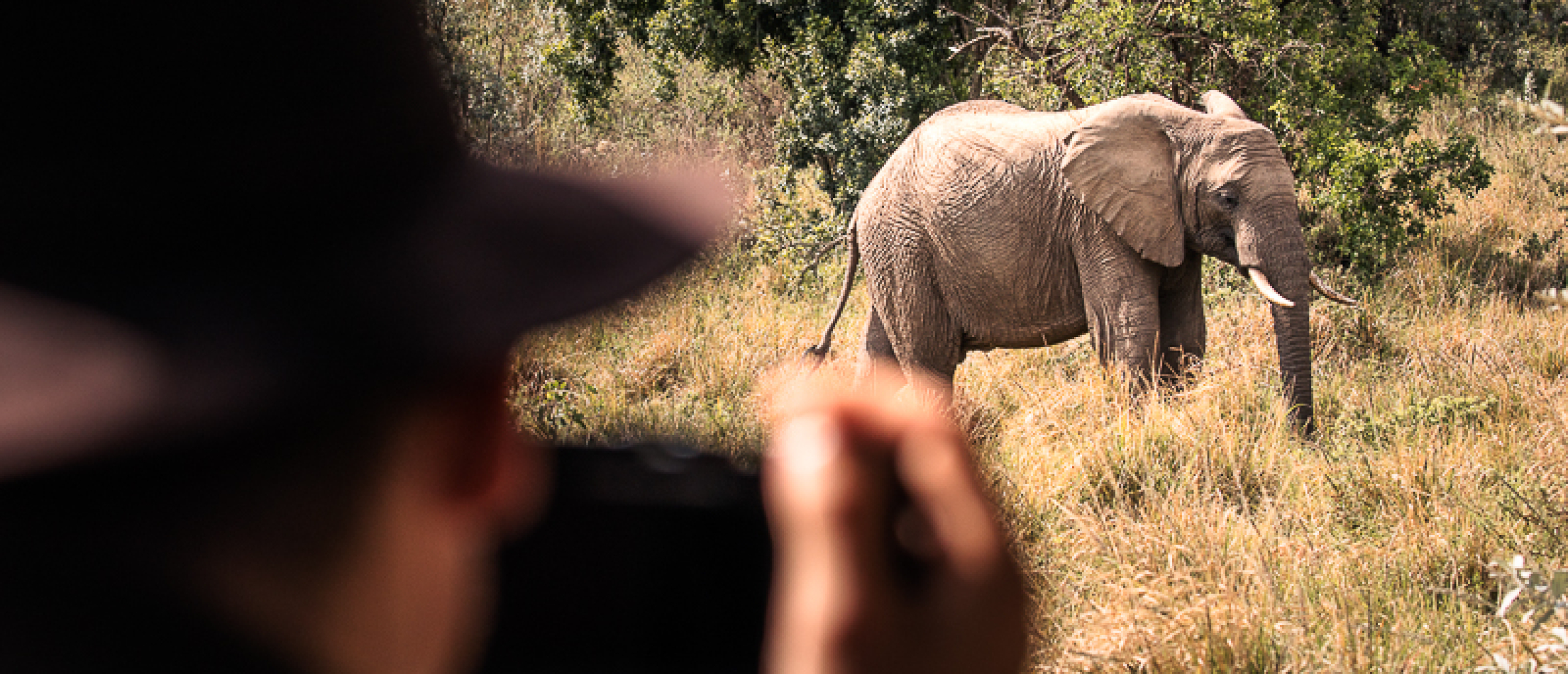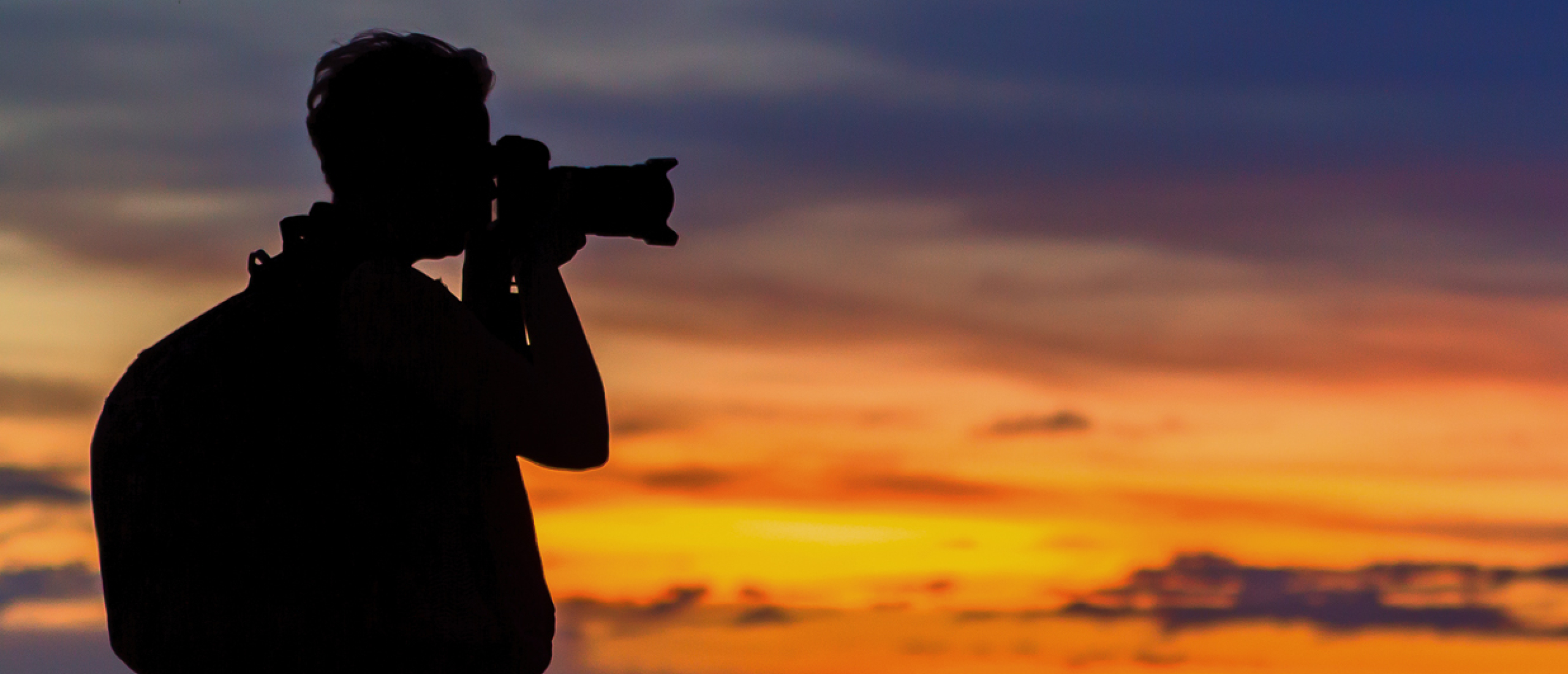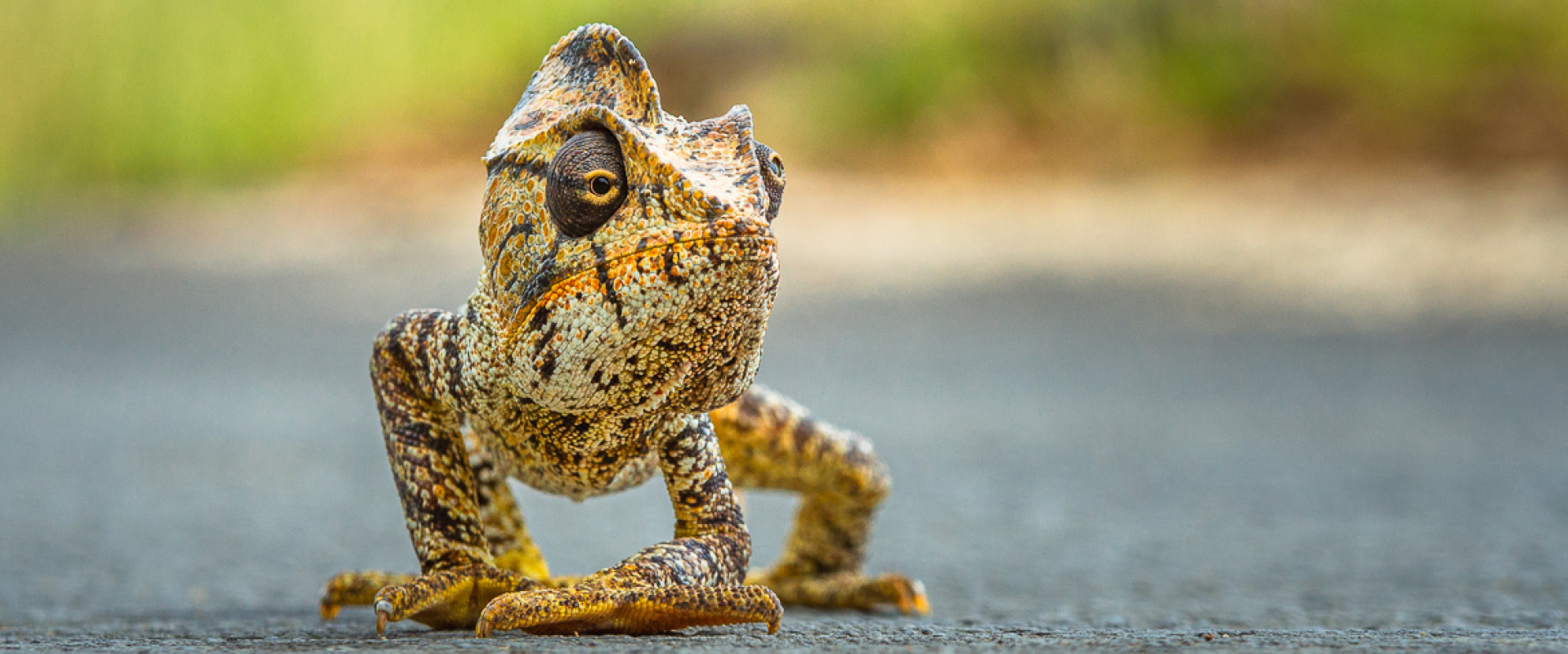
My ‘crossing chameleon’ photo is my first publication in National Geographic Magazine. The image is also part of a National Geographic photo exhibition. How did my photo end up in one of the most prominent magazines on our planet? In this article, I will explain how I got published in National Geographic Magazine. I will dive into the story and techniques behind this photo and share useful travel photography tips. For example what camera settings I used, the lighting of the image, and what adjustments I made in Lightroom. I will also share what inspired me to take this photo and what photography gear I used.
National Geographic Photo Contest
Every year, National Geographic hosts a photo contest. Winning the photo contest means you win a publication in National Geographic Magazine. The chance of being selected out of thousands of entrants is very small. In 2019 I participated in 3 categories: landscape, people, and animal. Two photos of my Madagascar trip and one from my Uganda trip. In total, there were 10.000+ submissions. Below, the other two images I participated with:
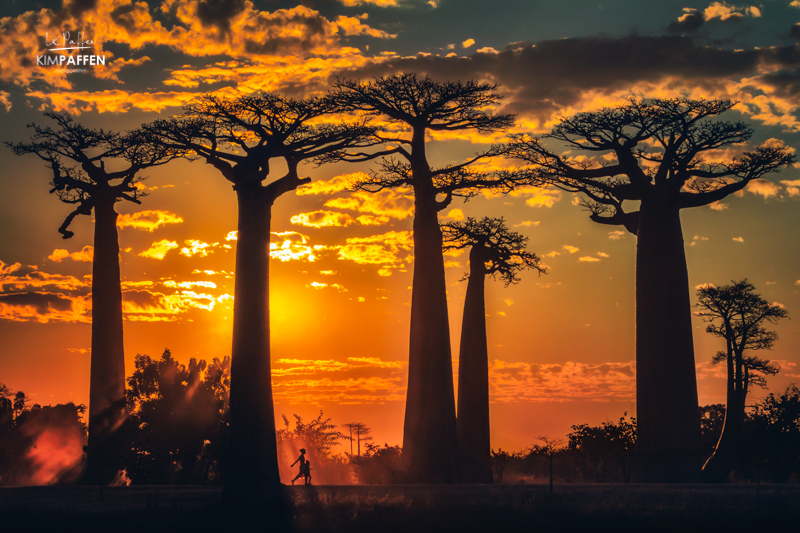
Landscape | Magical sunset at Avenue of the Baobabs in Morondava, Madagascar
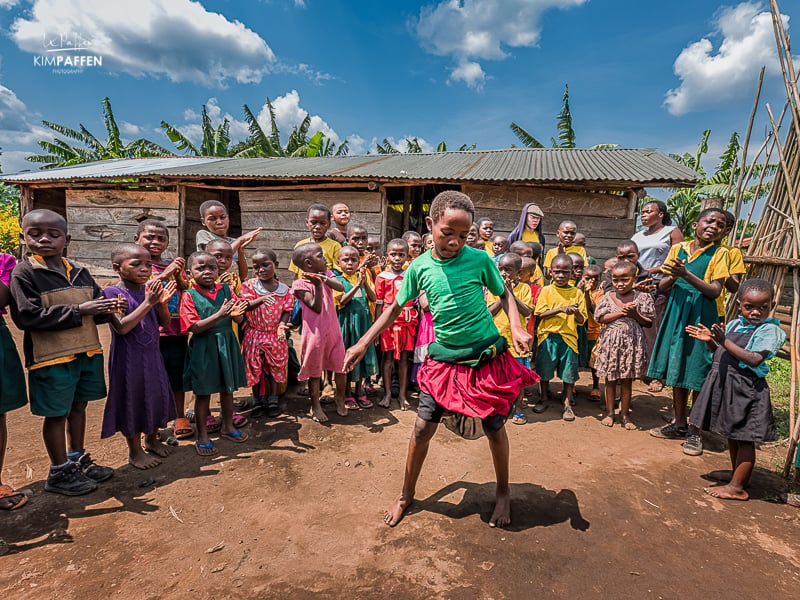
People | Ugandan School Children ‘Dance Like Nobody’s Watching’
Why I chose to participate with this chameleon photo
Before I decided to enter the photo contest with this Giant Malagasy chameleon I also selected 2 other possible contenders. A chimpanzee in Kibale Forest and a silverback in Bwindi Impenetrable Forest photographed on my trip to Uganda.
In the end, I chose the (maybe less favorite) reptile because it’s something different than you usually see. Not only the choice for a reptile instead of Africa’s Big 5 or favorable gorillas, but also because of the different pose, scene, and composition. Would that be worth a publication in National Geographic? I guess so.
The Giant Malagasy chameleon is endemic to Madagascar, which means they can’t be found anywhere else in the world! Yes, you can find them as pets in many houses, but I’m talking about wild animals here. If you want a photo of this chameleon living in the wild, you have to travel to Madagascar. Half of the world’s species of chameleons live in Madagascar’s ‘Land of the Chameleons‘.
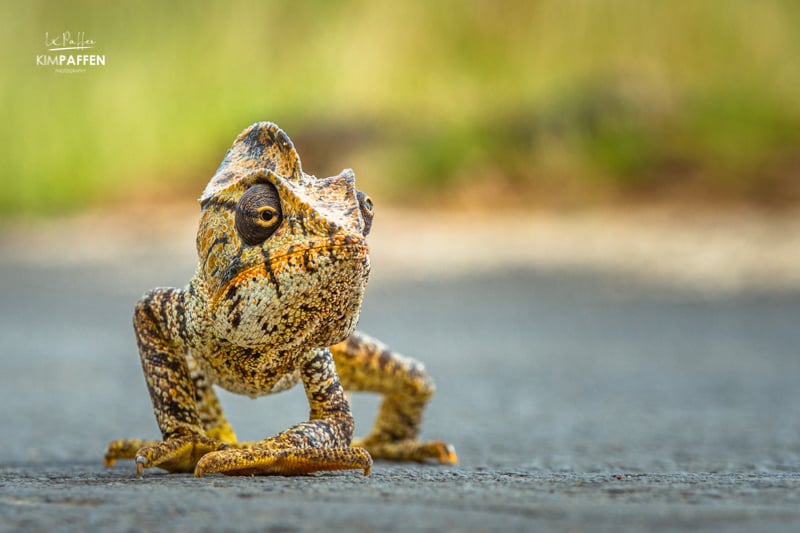
Animal | Malagasy Giant Chameleon crossing the street in Diego-Suarez, North Madagascar
Nominated NatGeo photo
The National Geographic jury selects 15 photos per category that have a chance to win the National Geographic Photo Contest.
The photo has been nominated as one of the 15 contenders, to win the contest and to win a publication in National Geographic Magazine.
I was super excited and shared my photo on social media!
Invited to a TV station
In the second and final selection, the public is allowed to vote on one of the 15 nominated photos. The local newspaper and TV station picked up the news. The newspaper published my photo. I appeared on L1 television to talk about my nominated photo. The TV host asked my opinion about the other contenders and why it is important to win a publication in National Geographic Magazine. Because of that, my photo received a lot of votes.
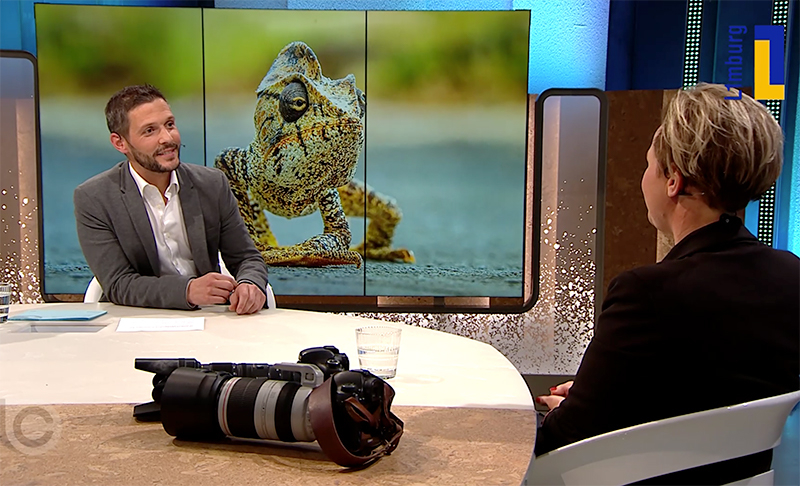
My 8 minutes of fame on L1 TV; a local news station in Limburg, the Netherlands
Official National Geographic award ceremony
National Geographic planned an official award ceremony to announce the winners. I planned a South Africa road trip but I changed that plan to attend the award ceremony. In the theater all, you could see all the nominated photos on a big screen.
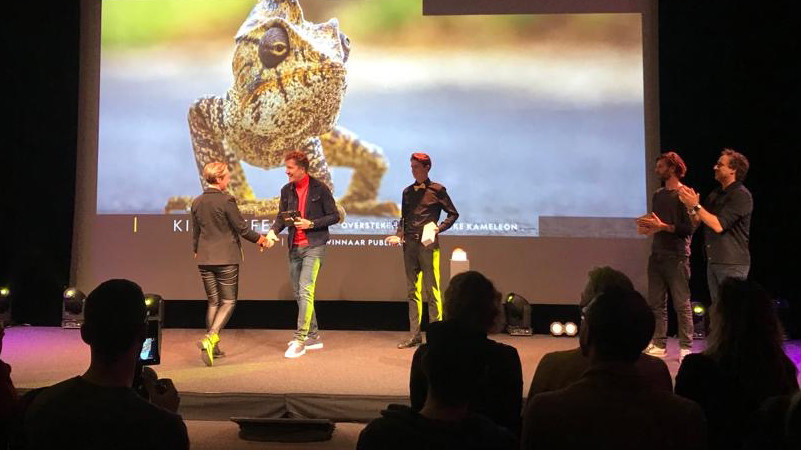
Official National Geographic Photo Competition Award Ceremony
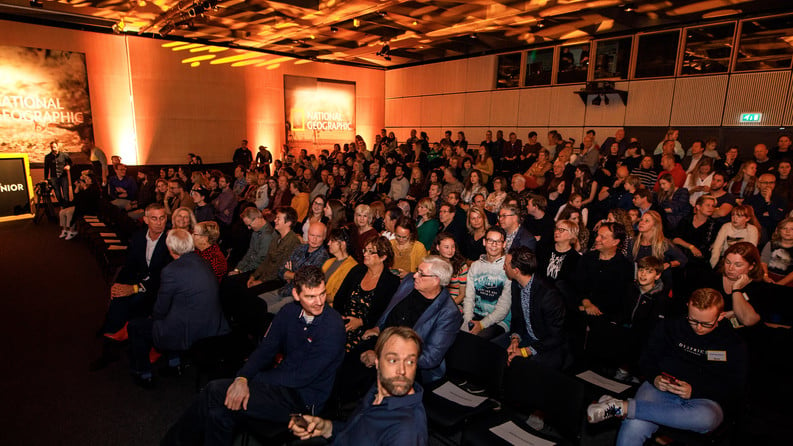
Award-winning National Geographic photo
The jury was present to meet the photographers, announce the winners, and hand over the awards.
I won the Public Choice Award of the National Geographic Photo Contest 2019 in the category animal.
They invited me to the stage to receive the official National Geographic Public Choice Award. I was extremely proud and happy to be one of the 6 winners.
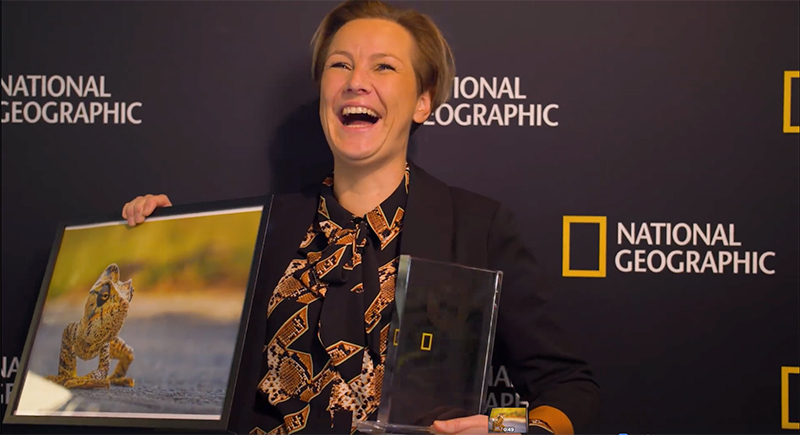
Publication in National Geographic Magazine
The winning photos of the National Geographic photo contest won a publication in National Geographic Magazine! That is how my award-winning chameleon photo ended up in National Geographic Magazine. The chameleon image is also part of a National Geographic photo exhibition ‘Colors of the World’.
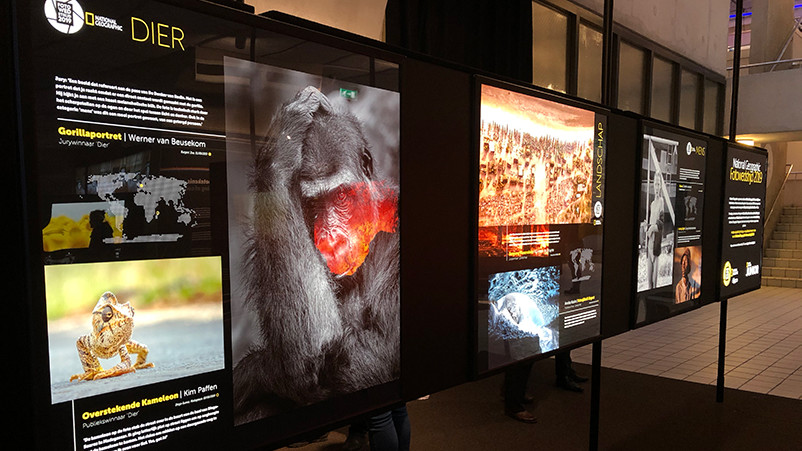
The story behind my first publication in National Geographic
Curious about the story and techniques behind the lens of my first publication in National Geographic? I will share the following details: the exact photo location of the image, the photography gear I used, what time I captured the image and the time spent taking the photo, the lighting of the image, how I edited the chameleon, what inspired me to capture this chameleon, how to treat animals with respect and what I think of my photo.
1. Photo location
I captured this adult male chameleon (Furcifer Oustaleti) during a 3,5-week road trip through Madagascar. Spotted on the main road along the Bay of Diego-Suarez in Northern Madagascar.
2. Photography gear
For this image, I used a Canon EOS 7D in combination with a Sigma 70-200mm 2.8 lens; a perfectly sharp and bright lens.
Camera settings: ISO 250, f/9, 1/200s with a focal length 200mm.
I already packed all of my camera gear for my onward flight. I grabbed the Canon 7D out of my Benro Traveler photography bag because the 70-200mm 2.8 zoom lens was mounted to that camera body. Apart from this gear, I also traveled with a Canon 5D MKIV and a 100-400mm 4.5-5.6 L zoom lens. Because it felt like there was no time to change bodies and lenses I had to make a decision in a couple of seconds and chose to use my brightest 2.8 zoom lens. For my trip to Madagascar, I packed two zoom lenses for photographing Madagascar’s (endemic) wildlife and two wide-angle lenses for photographing Madagascar’s beautiful landscapes. For example, the Canon 16-35mm 2.8.
3. Time
The image was shot on June 2, 2019, at 10.53 AM.
Time spent taking the photo
Taking a good photo often requires a lot of patience and research on the subject you want to capture, but sometimes it’s partly about luck! The National Geographic photographers who have regular publications in the magazine, do a lot of research on the subject they want to photograph. In my case, I was lucky I saw this chameleon crossing the street on my way to the airport. It was a matter of seconds to decide what equipment to use.
I jumped out of the car and a few seconds later I instinctively got down on the asphalted street to get on eye-level with this colorful Oustalet’s Chameleon.
I knew I wanted to capture the somewhat comic and awkward walk including both eyes; The road surface had to be part of the picture too because you usually spot chameleons in plants and trees. This moment could be gone in a few seconds, so there was no time to spend a lot of time observing and capturing this particular chameleon. Apart from that, I had a flight to catch, something I almost forgot the moment I jumped out of the car.
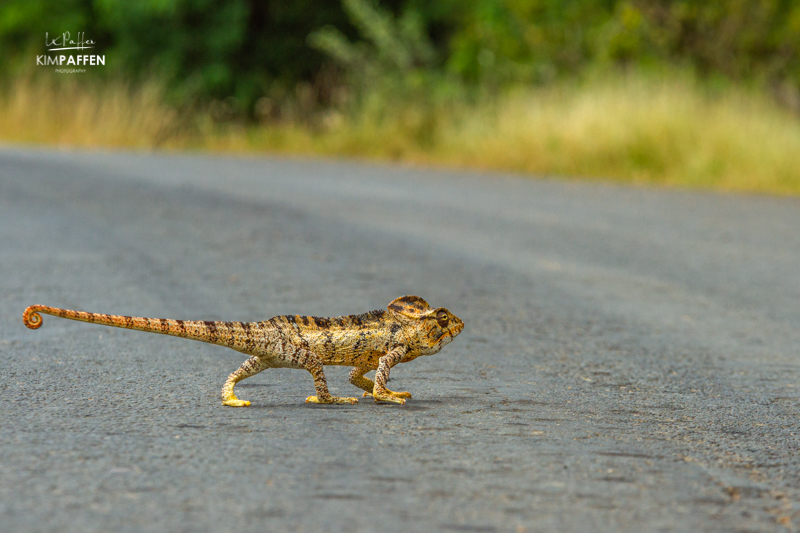
Unexpected moments
For unexpected moments like this, it’s good to be prepared. You need to know what you’re doing and how to use your camera and its settings. Again, I only had a few seconds to decide how I wanted to capture this moment. I wanted a fair part of the chameleon to be sharp, like head, eyes, feet, and toes. I wanted the background to be blurry with enough details on my subject in the foreground including the asphalted street. Therefore I decided to use f/9 with a focal length of 200mm to get a nice depth of field ratio. The more zoom you use, the bigger the effect of the subject jumping out of the picture towards the person who is looking at the photo. That is something the jury of National Geographic agreed on and brought me closer to that publication in National Geographic Magazine.
4. Lighting
Lighting can make a lot of difference between an average image and a top-class photo. My favorite time to photograph wildlife is during dusk and dawn. I particularly love the beautiful and warm light at the end of the day when the sun is touching the horizon, but in this (unexpected) case it was almost 11.00 AM and when a moment like this occurs you have to work with the present light. It was a bit cloudy with no harsh lighting. I was happy with the diffuse light of that moment because I didn’t have to deal with harsh light and shadows on the chameleon and the road.
5. Editing
The RAW file needed some level of processing to do justice to the scene I photographed.
Basic adjustments
First I did some basic adjustments to the highlights, shadows, contrast, exposure, clarity, and vibrance of the image. After those adjustments, I had to straighten the photo a little bit and I chose to position the chameleon slightly off to the left side for a more natural-looking and well-balanced photo.
Rule of Thirds
In photography, it’s good to know some basic ‘photography rules’, as the Rule of Thirds. The rule is a guideline for a good composition. It says that it’s best to put the subject of an image on the side instead of in the center. I often use this rule, but not always! I also have images where I positioned my subject, for example, a leopard right in the center to get a powerful image. For the crossing chameleon, the rule of third worked perfectly for me. I positioned the chameleon on the left while he is looking to the right.
Besides some basic adjustments in Lightroom, I only removed one tiny spot in Photoshop. It was a blurry leaf lying on the road between me and the chameleon. If you want to participate in the National Geographic Photo Contest, you are not allowed to heavily photoshop your image. Something to keep in mind, when you are eager to win a publication in National Geographic Magazine
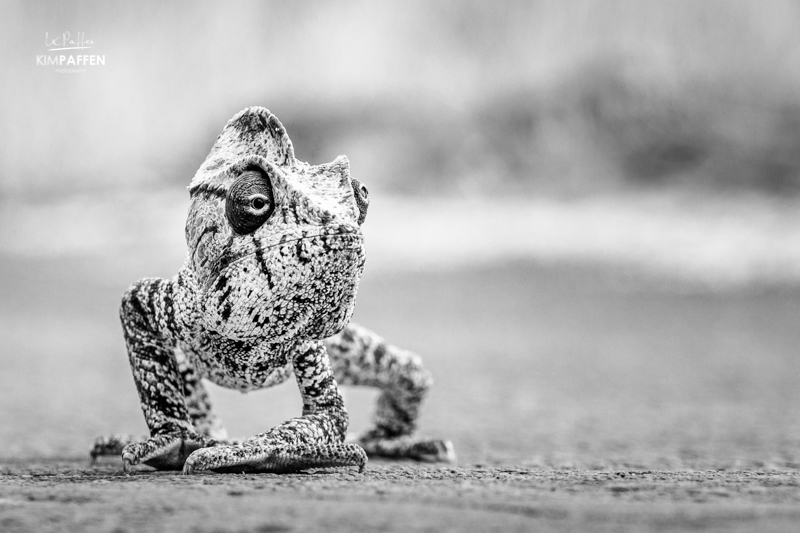
6. Inspiration
Madagascar is home to half of the world’s species of chameleons, also called ‘The land of Chameleons’. Spotting chameleons (or Tanala in Malagasy) was one of the reasons to travel to Madagascar. I already watched several chameleons on my Uganda Trip. I was intrigued by the chameleon’s behavior, colors, and movement. Apart from visiting Avenue of the Baobabs and spotting Madagascar’s Lemurs, this was another reason to explore the treasure Island of Madagascar.
Chameleons change color
Chameleons are family of the lizards, which belong to the Iguania. They possess some characteristic aspects no other animals have. The most well-known feature is the ability to change color. That is why it was beautiful to see this yellow-colored chameleon walking on the grey asphalt. Color change has functions in camouflage, but they don’t change color to match any color of their environments. All chameleons have a natural color range with which they are born and can change by temperature, mood, and light. Color change signals a chameleon’s physiological condition and intentions to other chameleons. For example, they tend to show brighter colors when displaying aggression to other chameleons. For a long time, it was thought that chameleons change color by dispersion of pigment-containing organelles within their skin, but research showed that pigment movement only represents part of the mechanism.
The 360-degree vision of a Chameleon
Apart from that chameleons have a very long, sticky elastic tongue and remarkable eyes. They can move their eyes separately, with each eye having a field of 180 degrees. Sometimes it might be useful to have a 360-degree vision because nobody likes being sneaked upon.
With a 360-degree view, they can focus their eyes quickly and enlarge the subject they are looking at, just like a camera lens.
I knew I wanted to capture both eyes looking in different directions and as you can see in the image, they are able to move their eyes separately in every possible way. One eye is keeping an eye on me and the other one on the road. Another reason why I’m happy with my image.
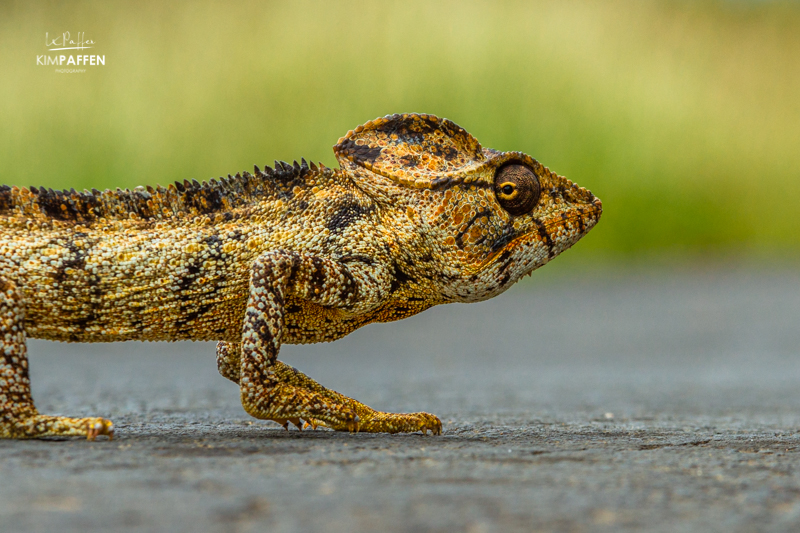
Reptiles of Madagascar: Malagasy Giant Chameleon
Malagasy Giant Chameleon
The adult male chameleon I had in my lens belongs to the Oustalet’s Chameleon also known as the Malagasy Giant Chameleon. The scientific name is Furcifer Oustaleti, a species of chameleon that is endemic to Madagascar and found in dry and moist habitats, at both high and low elevations throughout Madagascar. It’s one of the most adaptive and common chameleon species in Madagascar. The name ‘Furcifur’ means forked and refers to their feet while ‘Oustaleti’ refers to the last name of French biologist Jean-Frederic Emile Oustalet, in whose honor the species is named. Males can grow up to 68,5 centimeters in length. Females are usually half the size.
The Oustalet’s Chameleon is very territorial and spends the majority of its life in isolation, apart from mating sessions. The arboreal chameleon is a real climber and usually lives in trees, but uses the ground to cross streets or areas without bushes/climbing opportunities. Although you will sometimes find them on the ground it’s not very common to see a chameleon crossing the street.
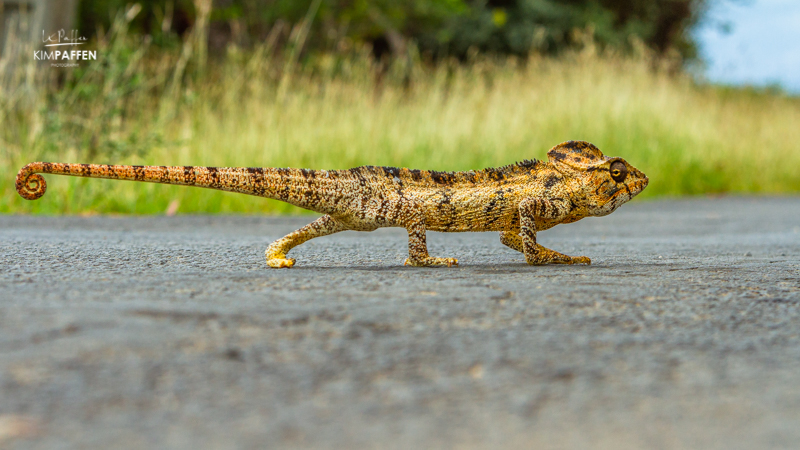
Malagasy Giant Chameleon is also known as Oustalet’s Chameleon
Chameleon crossing the street
I had to take advantage of that moment. The risk of lying down in the middle of the main road in Antsiranana, I took for granted. As I wrote before, I instinctively got down on the street to be on eye-level with this reptile. I knew that was the perfect way to capture this moment.
Being on eye-level with your subject usually gives your image more power, like there’s a connection with your subject and that is what I see when I look back at my image. Because of the very low vantage point, I was able to create a perfect dept of field ratio.
The jury of National Geographic loved the story behind the image and agreed on the connection with the subject because of that low vantage point. Because of the zoom, it looks like the chameleon is jumping out of the picture towards the person who is looking at the photo. That is one of the reasons why my photo got noticed by the National Geographic jury. The image stood out and the nomination brought me a few steps closer to a publication in National Geographic Magazine.
Chameleon Inspiration
After reading this section you now probably know what inspired me to take this photo. I can watch chameleons for hours; how they move in a robotic slow-motion way. Truly amazing. I was lucky to spot several chameleons during my trip to Madagascar, but still not as many as I hoped for. One of my goals is to go back to Madagascar to focus on different chameleon species throughout Madagascar.
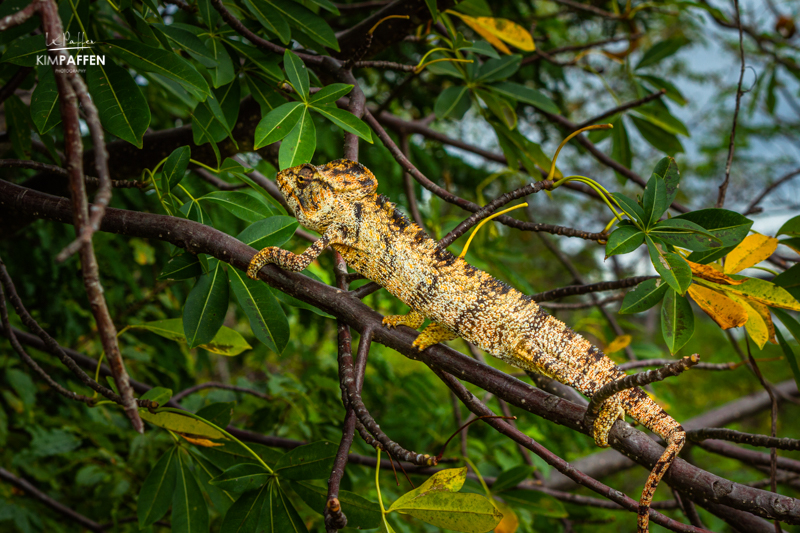
Furcifer Oustaleti is the scientific name of this chameleon species
7. Treat wild animals with respect
It can be difficult to get a good shot of a chameleon with lots of leaves and branches covering the reptile. Some guides tend to pick up chameleons to give you the chance of taking a ‘good’ photo, but I usually tell the guides to leave them where they are because I feel kind of sorry for these animals being disturbed by us humans. Chameleons are also being held as pets on a large scale throughout the world.
Chameleons are generally regarded as easily upset. The Malagasy Giant Chameleon is, however, a comparatively calm and peaceful member of the chameleon tribe. They also exhibit this laid-back attitude towards humans. They don’t get excessively upset, even when they are picked up carefully. You will only see the threatening mouth-opening if they are seriously provoked. At least that is what researchers in the field say about this species of chameleon.
Wildlife first, perfect picture second
In my opinion, wild animals need to stay as wild as possible. Of course, I also want a perfect picture of a chameleon to win that publication in National Geographic, but not without putting these wild animals first and my perfect picture second. That is another reason why I was happy with that moment and experience on the street. The chameleon chose to cross the street by itself. It was not put there by a human to create this scene. Since I didn’t want this beautiful reptile being run over by a car, we did help the chameleon to climb on a thick branch to get safely to the other side of the road.
8. The final result of my publication in National Geographic
I’m very happy with the final result of my crossing chameleon, but there is always room for improvement. Maybe this photo was even better when a tiny piece of the tail would be visible.
Next time when I travel to Madagascar I would like to have enough time to observe chameleons. I would love to capture chameleons catching an insect with their tongue. For these kinds of images, you need enough time to spend around these reptiles and be patient for those unique moments.
I feel blessed with this nomination by the jury of National Geographic and appreciation for my photography work. I’m proud of my award, recognition, and publication in National Geography Magazine. My first photo that won a publication in National Geographic Magazine!
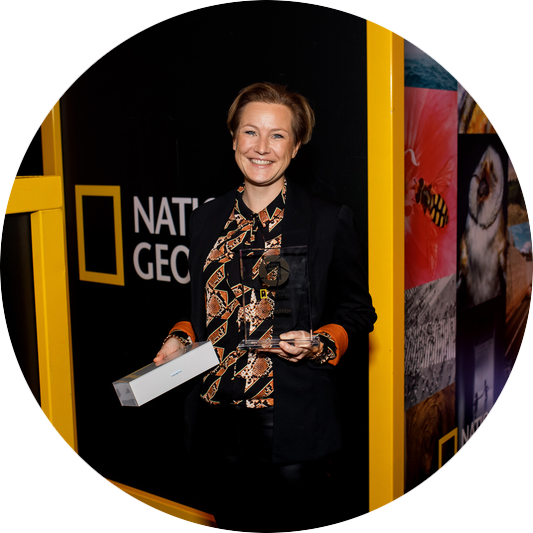
When is the National Geographic Photo Contest 2020?
The National Geographic Photo Contest is every year! I participated in the prestigious National Geographic Photo Contest for the Netherlands and Belgium. This Nat Geo photo contest is from June to October in 3 categories: landscape, animal, people. The winners will be announced in November. National Geographic UK has its own competitions; it’s for residents of the UK and Ireland.
The most famous contests are the global National Geographic Travel Photographer of the Year contest and the Nature Photographer of the Year. The National Geographic Photo contests are one of the most popular contests in the world, with a chance of winning a publication in one of the most popular travel magazines on our planet.
Did you enjoy my story behind the lens of this ‘famous’ Malagasy Giant chameleon?
If you enjoyed reading my story on how my photo ended up in Nat Geo Magazine and this article gave you informative insights into how I captured this colorful reptile and what inspired me, you would make me very happy by sharing this article on your social media channels, like Facebook, Instagram, and Twitter or a pin on Pinterest!
